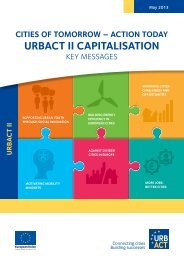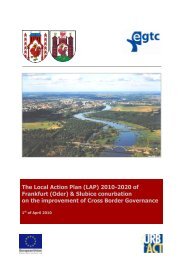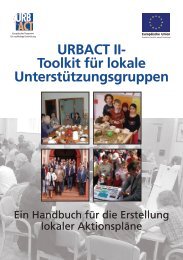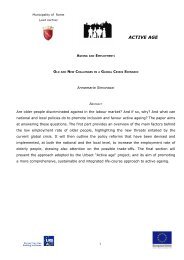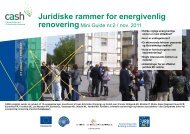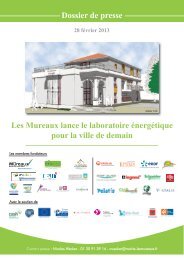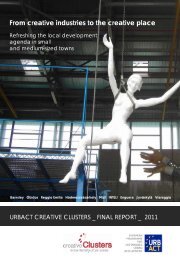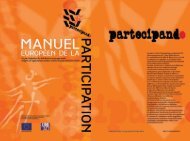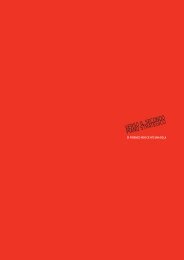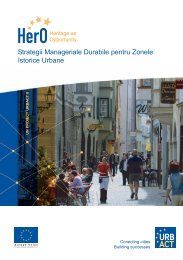ENTER.HUB_Baseline study PDF, 6 Mo - Urbact
ENTER.HUB_Baseline study PDF, 6 Mo - Urbact
ENTER.HUB_Baseline study PDF, 6 Mo - Urbact
You also want an ePaper? Increase the reach of your titles
YUMPU automatically turns print PDFs into web optimized ePapers that Google loves.
EUROPEAN<br />
UNION<br />
European Regional<br />
Development Fund<br />
<br />
<br />
<br />
themes where they would like to be included in the respective clusters as<br />
tutor/contributor for this theme (because they have already sizeable experience)<br />
themes that they would like to join as followers/learners for this theme<br />
themes which they are not interested to participate in this cluster<br />
By filling in this matrix, we then will find out what themes to retain, group (or abandon)<br />
or add and form the groups/cluster of cities, for each theme (or macro theme/ group of<br />
themes), indicating the leader, tutor or follower role<br />
The 10 themes – in a different order than in the proposal for the development phase - the<br />
theme “economy” is a horizontal cross cutting theme and as such moved to the 10 th<br />
place- are the following (for a description of the scope of each theme see below):<br />
1. Synergy between hub and city<br />
2. Synergy between hub and hinterland<br />
3. Urban and environmental insertion<br />
4. Tourism and culture<br />
5. Communication / Participation / Governance<br />
6. Creation of networks (among <strong>HUB</strong> or polycentric citiescities)<br />
7. New planning tools and toolkits<br />
8. Railway - railway networking<br />
9. Railway – road networking<br />
10. among and overall: economy<br />
Theme 7 was commented by Creil Agglomeration unclear and they mentioned that all<br />
“planning figures” were determined by national law; we were not thinking of such<br />
instruments (like master plan etc.) but rather of toolkits or checklists or procedures to<br />
organize the planning process around the <strong>ENTER</strong>.<strong>HUB</strong> questions – like how to define<br />
stakeholders, caption areas, sequences of actions etc. to achieve the interaction.<br />
The condensed matrix where each partner in conversation with the respective ULSG<br />
presents their preferences is shown below.<br />
<strong>ENTER</strong>.<strong>HUB</strong> <strong>Baseline</strong> <strong>study</strong> 2012.10.31<br />
69



